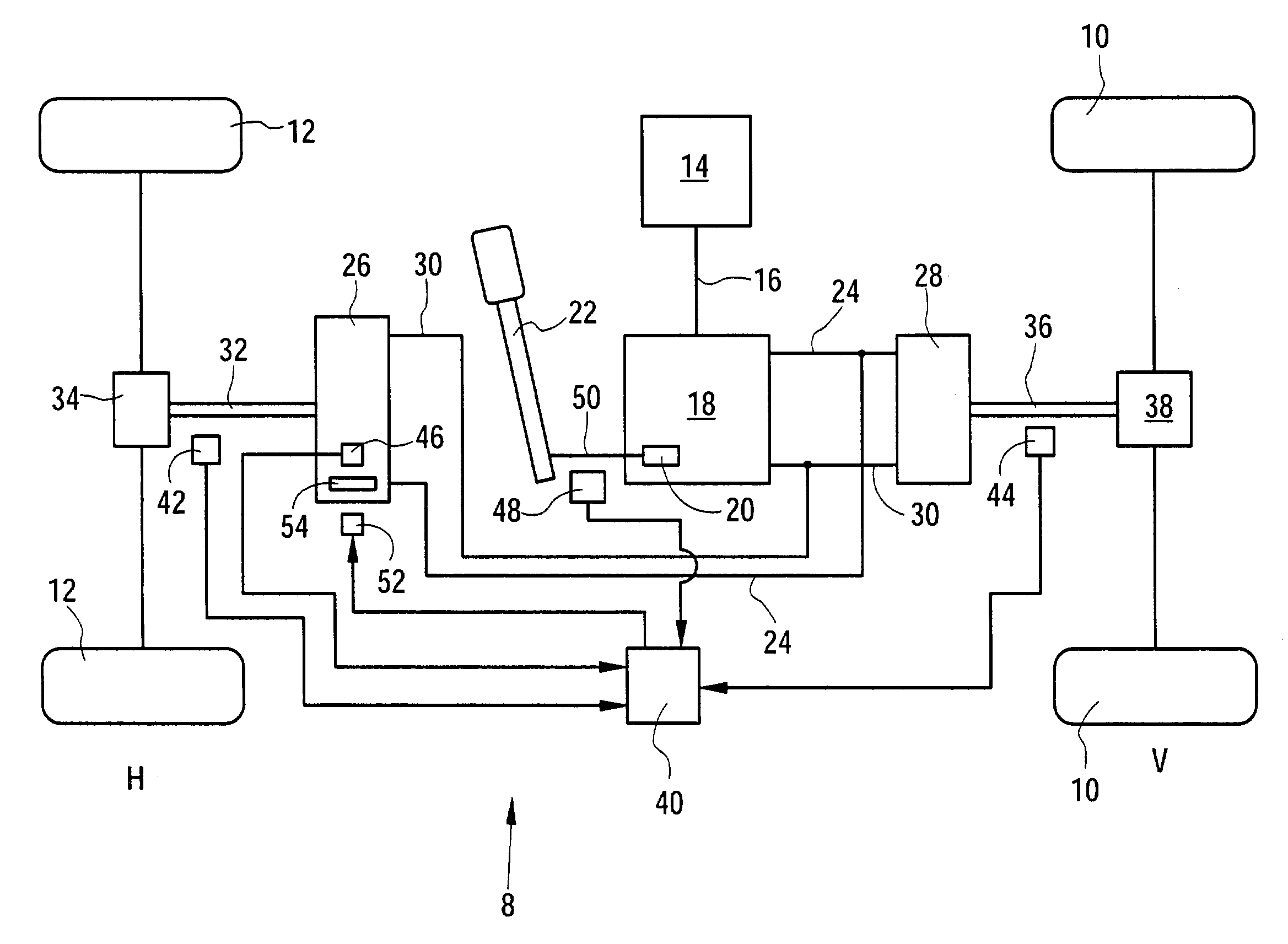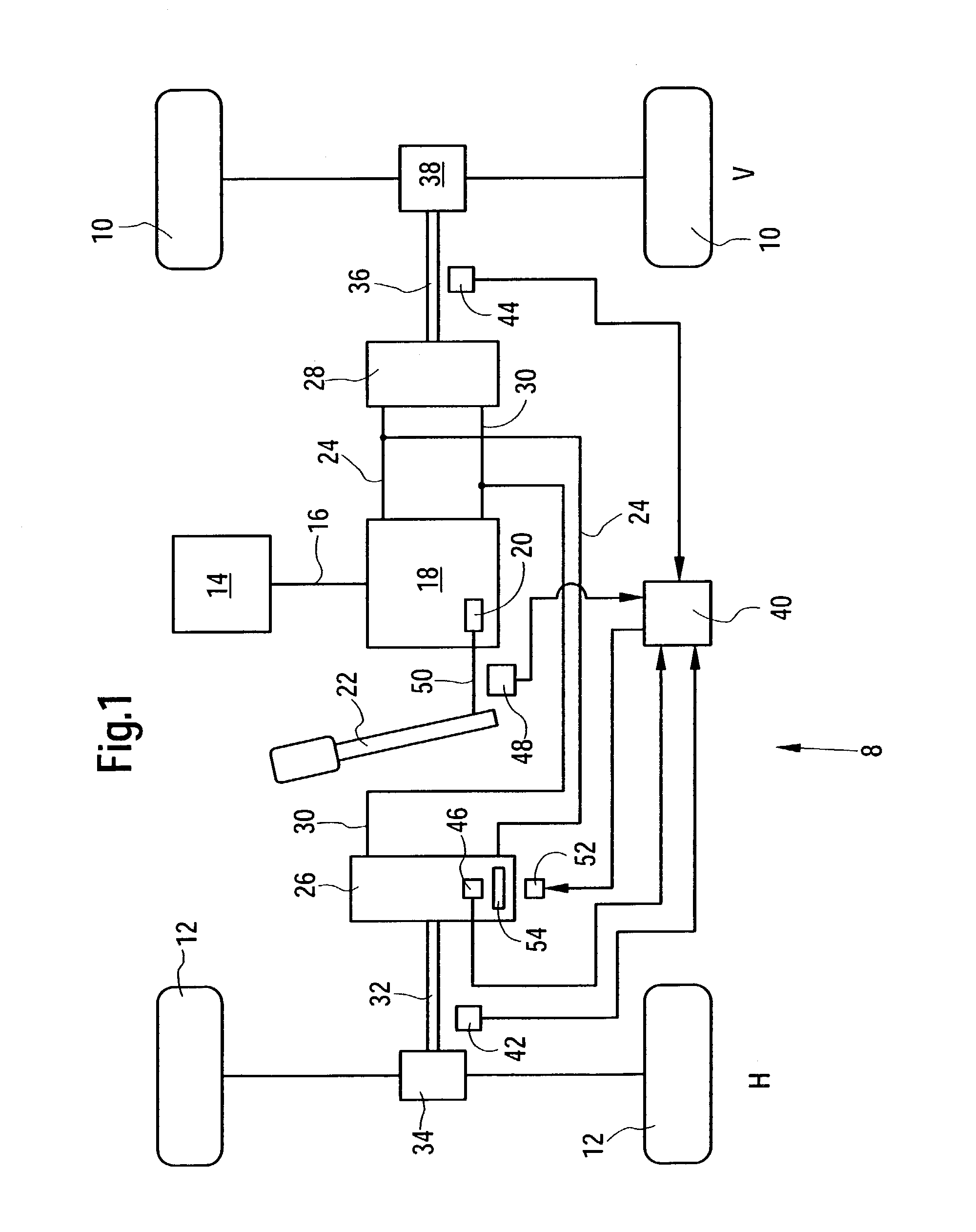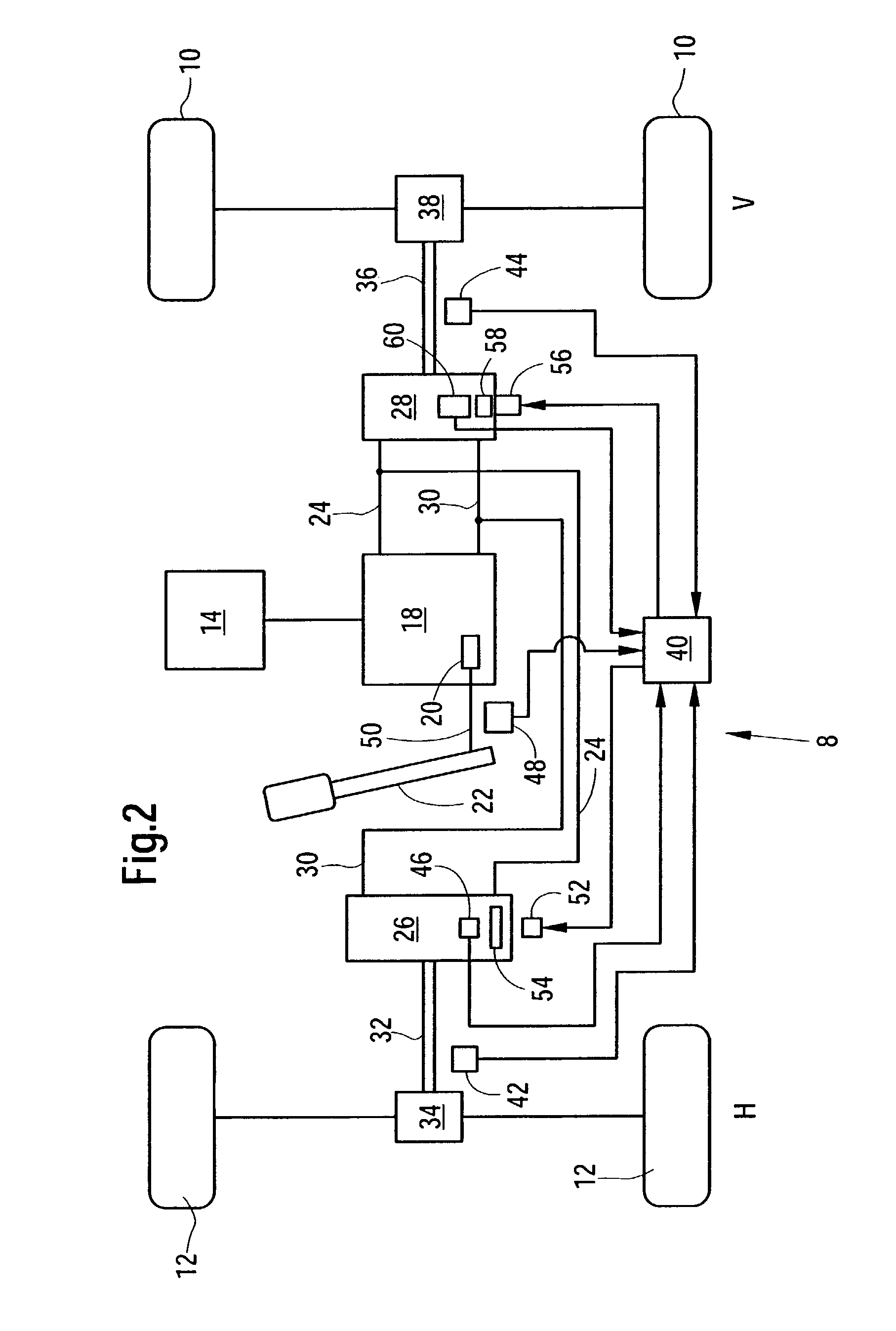Drive system of a utility vehicle
a technology of drive system and utility vehicle, which is applied in the direction of propulsion parts, mechanical equipment, transportation and packaging, etc., can solve the problem of not allowing any useful conclusion, and achieve the effect of less space and greater safety
- Summary
- Abstract
- Description
- Claims
- Application Information
AI Technical Summary
Benefits of technology
Problems solved by technology
Method used
Image
Examples
second embodiment
[0035]The rotational speed sensors 42 and 44 measure the actual velocity of the utility vehicle 8. When this reaches or exceeds a predetermined maximum speed specific to a given country, the control arrangement 40 induces the third actuator 62 to bring the swash plate 20 of the hydraulic pump 18 into a position that corresponds to a lower velocity. This provides assurance that the allowable maximum speed is maintained. Furthermore the control arrangement 40 detects the operating conditions of the first and the second hydraulic motors 26 and 28, as in the case of the second embodiment and controls the two actuators 52 and 56 in such a way that an optimum operating condition of the hydraulic motors 26 and 28 is achieved.
third embodiment
[0036]In the third embodiment, the main engine 14 is associated with a load sensor 64 in the form of a rotational speed sensor that detects the rotational speed of the main engine 14. On the upper side of the operating control lever 22, an input arrangement 66 is arranged that includes several manually operated keys. The input arrangement 66 and the load sensor 64 are connected with the control arrangement 40.
[0037]The input arrangement 66 permits the selection of an operating mode in which the forward propulsion velocity is set automatically. The control arrangement 40 induces the third actuator 62 to bring the swash plate 20 into a position that corresponds to a velocity that is preset by the operating control lever 22. In case the signal of the load sensor 64 ever indicates that the rotational speed of the main engine 14 has fallen off due to an excessive load, for example, if a chopper arrangement or a threshing and separating arrangement is loaded to a greater degree than that ...
PUM
 Login to View More
Login to View More Abstract
Description
Claims
Application Information
 Login to View More
Login to View More - R&D
- Intellectual Property
- Life Sciences
- Materials
- Tech Scout
- Unparalleled Data Quality
- Higher Quality Content
- 60% Fewer Hallucinations
Browse by: Latest US Patents, China's latest patents, Technical Efficacy Thesaurus, Application Domain, Technology Topic, Popular Technical Reports.
© 2025 PatSnap. All rights reserved.Legal|Privacy policy|Modern Slavery Act Transparency Statement|Sitemap|About US| Contact US: help@patsnap.com



